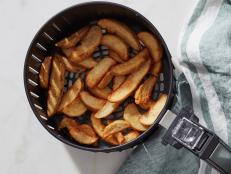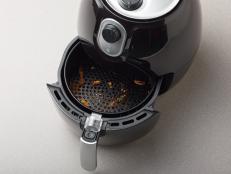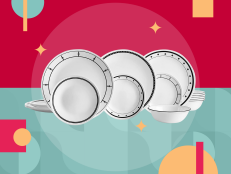How I Keep My Smoke Detector From Going Off While Cooking — Safely!
You can sear a steak at home without the blare of a smoke detector going off in the background.

Neustockimages/iStock
Every time I'm ready to sear a steak, cook a stir-fry or grill chicken, I head to the hall closet for my long-handled broom — you know, the one long enough to reach the silencing button on the smoke detector.
It's not the most creative solution, but until science figures out how to sear steak or crisp fish skin without smoke, I relish the 15-minute break from the bleep.
I've read about elaborate contraptions involving coat hangers, super glue and those miniature fans people take to baseball games designed to blow smoke away from the detector — a level of crafting beyond my patience or abilities — and small shower caps you can slip over the detector while you’re cooking. Neither option appeals to me.
Here's my smoke detector solution (no crafting or trips to the hardware store required).
You’ll need a screaming hot, clean oven. Crank it up as high as you can — 500 degrees F to 550 degrees F, ideally.
Then prepare your pan — an oven-safe cast iron or a heavy-bottomed sauté pan — by preheating it (ungreased) in the oven for about 30 minutes. In general, you want to heat your pan before adding oil to it because the longer oil sits in contact with a hot surface, the more time for the oil to break down and smoke.
So why heat a dry pan in the oven and not on your stove? In the oven, you have total control over the heat. Heating the pan in the oven means a hotter, more even temperature.
Meanwhile, bring your meat or fish to room temperature and season it. Choose an oil with a higher smoke point than olive oil; go for canola, safflower, avocado or peanut oil. (See: 7 Common Cooking Oils and When to Use Them) Then, lightly coat your fish, meat, tofu or vegetables you plan to sear with oil instead of coating the pan. If you oil the whole pan, the whole pan will smoke, if you just oil the food, only the areas in contact with the food will smoke.
Remove your preheated pan from the oven and immediately drop your steak on it. Turn the heat on your burner to medium or medium-high as the pan begins to cool to maintain the temperature of the pan. The result will be a nice even sear with as little smoke as possible.
Of course, there will still be some smoke. But between the oven and the shortened period the oil is contact with the pan, it should be a manageable amount that any weak, apartment-grade hood exhaust or open window can handle.
Related Links:





























































